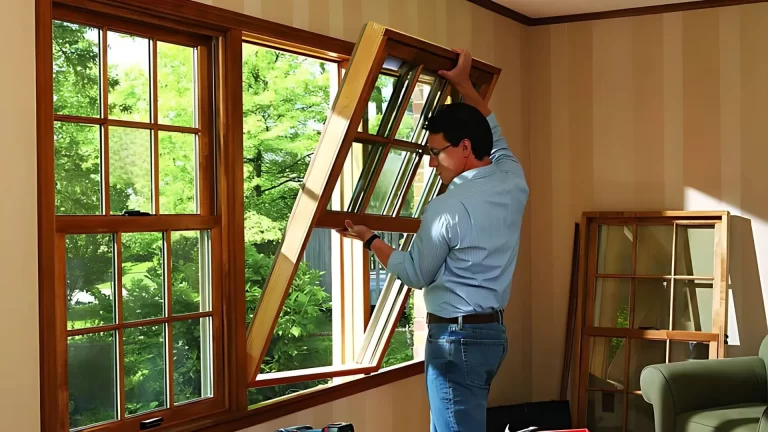
Reselling sneakers online is more than just flipping footwear for profit, it’s a thriving marketplace that blends passion for shoes with entrepreneurship. From rare limited-edition drops to gently used kicks, reselling sneakers can become a lucrative side hustle or even a full-time venture. If you’re looking to jump into the sneaker reselling game, this guide will take you through each crucial step of the process. Whether you’re a seasoned sneakerhead or a beginner, here’s how to maximize your sneaker reselling success.
1. Take Attractive Photos and Videos of Your Sneakers
First impressions matter, especially if you’re selling jaw-dropping sneakers. People want to see the product before they buy it, so having high-quality images and videos is a must. Here’s how to make sure your sneakers look their best online:
Use Originals: Using your own, original photos is crucial in establishing trust with potential buyers. Many platforms even require you to post images with a personal identifier, such as a handwritten note with your username and the current date, to prove the authenticity of your listing. This simple step not only meets guidelines but also helps build credibility.
Show Different Angles: Capture every detail. Take shots from the front, back, sides, and overhead. Don’t forget to zoom in on the soles, any logos, or key features (like unique stitching or colorways). If the sneakers have flaws, show them in the photos—honesty is critical.
Take Videos Too: While photos are crucial, short videos can add a level of authenticity. Show the sneakers in motion or give a close-up 360-degree view to give buyers a complete picture of what they’re purchasing.
These visuals will not only showcase the shoes’ best features but will also build trust with potential buyers by giving them a clear understanding of the product’s condition.
2. Come Up with a Description
Writing a strong product description is essential in convincing buyers to make the purchase. Think of this as your opportunity to “sell” the sneakers. Here’s what you need to include in your description:
Brand and Model: Be clear about what you’re selling. Mention the brand, model, colorway, and size upfront. If the sneakers are part of a limited-edition release, highlight that as well.
Fit: Some sneaker models fit differently. If you’ve noticed that the particular pair runs smaller or larger than usual, let buyers know. This will prevent returns and ensure buyer satisfaction.
Story or Unique Feature: Is there a story behind the sneakers? If the shoes were a highly sought-after release, mention it. Buyers are often drawn to the background or rarity of a sneaker, so including these details can boost interest.
A compelling description will give potential buyers all the information they need and increase your chances of making a sale.
3. Create Hype on Social Media
Social media is a powerful tool when it comes to sneaker reselling. You don’t need to have thousands of followers to generate hype, just strategic posts and engagement with the right community. Here’s how to do it:
Share Sneaker Content Regularly: Post sneaker-related content on platforms like Instagram, TikTok, and Twitter. Create posts about upcoming releases, fake vs real content, sneaker news, or styling tips that incorporate the sneakers you’re reselling.
Engage with Sneaker Communities: Join Facebook groups, subreddits like r/sneakers, or other online forums where sneakerheads congregate. Share your posts, participate in discussions, and make connections with potential buyers.
Influencer or Affiliate Marketing: If possible, collaborate with influencers who are already established in the sneaker community. Offering them a pair to review or sell can bring exposure to your brand.
For an added boost to your social media hype, you can explore engagement-boosting platforms like Blastup.com. Such an approach can help increase your likes, views, and followers, giving your posts more visibility and creating buzz around your sneaker listings. When used alongside authentic interactions, it can be a great way to build momentum and draw attention to your reselling business.
4. Be Transparent About the Condition
No one likes surprises, especially when spending big money on a pair of sneakers. When reselling sneakers, honesty is key, especially regarding their condition. If the sneakers have never been worn or tried on, you can label them as “deadstock” (DS), meaning they are brand new. For used sneakers, you need to be transparent about the wear and use your best judgment when describing their condition.
Use Clear Descriptions: Sneakers are often described with terms like “VNDS” (Very Near Deadstock), indicating they’ve been worn but remain in excellent condition. This rating is subjective, so if you know how many times the sneakers have been worn, whether once, five times, or more, be upfront about it.
Honesty is Key: If the sneakers are more heavily worn, they might be classified as “beaters,” meaning they’ve seen significant use. While you may still find buyers for popular models in decent condition, it’s best to avoid listing overly worn shoes unless you know there’s a market for them.
By being transparent and providing accurate descriptions, you’ll build trust with buyers and set clear expectations, ensuring smoother transactions and fewer disputes.
5. Clean Worn or Used Shoes Before Reselling
If you’re selling pre-owned sneakers, taking the time to clean them can increase their resale value. A clean, fresh-looking sneaker is far more appealing to buyers than one that looks worn down.
Clean the Uppers: Depending on the material (leather, suede, or mesh), use appropriate cleaning tools. A soft-bristled brush for suede or a damp cloth for leather can help restore their appearance.
Wash the Laces: Dirty laces make sneakers look old. You can easily freshen them up by either hand-washing them or tossing them in a washing machine.
Deodorize the Interior: No one wants to buy sneakers with an unpleasant odor. Use sneaker-specific deodorizers or sprinkle baking soda inside the shoes overnight to eliminate any unwanted smells.
Cleaning your sneakers before selling not only boosts their resale value but also makes them more attractive to potential buyers.
6. Set a Competitive Price
Pricing your sneakers correctly is crucial for closing a deal. To set a price that sells:
Research the Market: Check platforms like StockX, GOAT, or eBay to see what similar sneakers are currently selling for. Be aware of trends—prices for certain models can fluctuate based on demand, seasonality, or celebrity endorsements.
Factor in Condition and Rarity: If the shoes are deadstock (brand new in the box) or a rare release, you can charge a premium. However, if they’re used, you’ll need to price them accordingly. Minor wear or limited availability can justify a higher price, but excessive wear will reduce the value.
Stay Competitive: If you’re serious about making a sale, stay competitive with other sellers. Undercutting slightly or offering free shipping might give you the edge you need.
Remember, buyers often compare multiple listings, so having a well-thought-out price can make the difference in getting your sneakers sold quickly.
7. Set Up Shipping and Packaging
Shipping sneakers requires care. A damaged package or shoe can ruin your transaction and hurt your reputation as a seller. Here’s what you need to know:
Choose Reliable Shipping Services: USPS, UPS, and FedEx all offer reliable shipping options, but make sure to offer tracking. This protects both you and the buyer.
Use Proper Packaging: Sneakers should be packed securely in their original box, if available. Double box the shoes (place the sneaker box inside a larger shipping box) to protect them from damage during transit.
8. Create Channels for Post-Shipping Problems
Even with the best planning, things can go wrong after the sale. Here’s how to prepare for post-shipping issues:
Have a Return Policy: Clearly state whether or not you accept returns. For used shoes, you may choose not to offer returns, but make sure that’s clear in your listing to avoid disputes.
Stay in Communication: If a package gets lost or delayed, keep your buyer in the loop. Offer help by tracking the package and working with the shipping carrier.
Handle Disputes Professionally: If a buyer claims the shoes were not as described, handle the situation calmly. Offer solutions like a partial refund or accept the return if necessary. A professional approach can help preserve your reputation.
Conclusion
Reselling sneakers online is a mix of strategy, presentation, and customer service. From taking the right photos to engaging on social media, being transparent, and handling post-shipping issues, every step plays a role in your success as a reseller. With a little practice and attention to detail, you’ll be able to turn your sneaker collection into a profitable business. Whether you’re flipping the latest drop or selling a beloved pair from your own collection, following these steps will help you succeed in the competitive world of sneaker reselling. Happy selling!
Write and Win: Participate in Creative writing Contest & International Essay Contest and win fabulous prizes.


